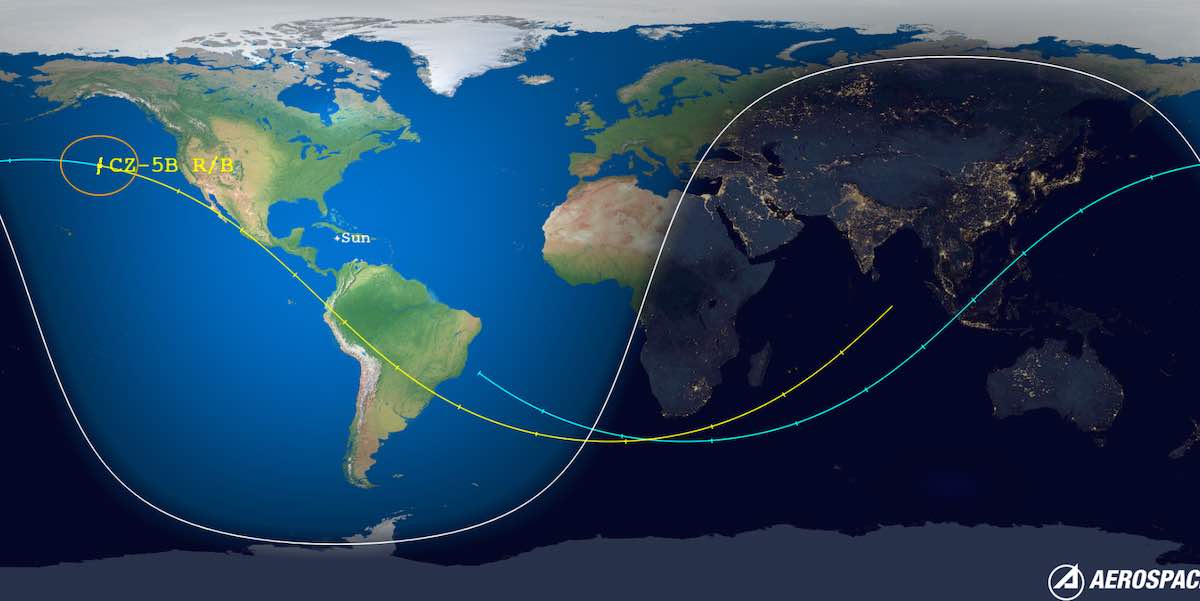Large Chinese rocket booster expected to fall back to Earth today – Spaceflight

The 22-ton core stage of a Chinese rocket is expected to fall back to Earth some time Saturday, the third time in two years China has allowed such a large booster to re-enter the atmosphere uncontrolled. The unguided re-entry poses a low but avoidable risk to the world’s population, space debris experts said.
The Long March 5B rocket took off July 24 with the Wentian module for China’s Tiangong space station, hauling one of the heaviest payloads launched into orbit in recent years. The nearly 100-foot-long (30-meter) core stage of the Long March 5B rocket fired its two hydrogen-fueled engines for about eight minutes to inject the Wentian module into orbit.
Four strap-on boosters burned their propellant and jettisoned a few minutes after launch to fall into the South China Sea. But the design of the Long March 5B, one of the most powerful operational rockets in the world, means its core stage accelerates to orbital velocity.
Most launchers carry an upper stage to finish the job of placing a payload into orbit, leaving the booster to fall back to Earth in the ocean or to be recovered for reuse, as SpaceX does with its Falcon 9 rocket.
As of early Saturday, the Long March 5B core stage was forecast to re-enter the atmosphere in a period between 1615 GMT (12:15 p.m. EDT) and 1815 GMT (2:15 p.m. EDT), according to a prediction by the Aerospace Corp., a California-based federally-funded non-profit research institute.
The rocket’s orbit takes it between 41.5 degrees north and south latitude during each hour-and-a-half lap around Earth. The land between those latitudes is home to about 88% of the world’s population.
“It’s low risk on a global scale, but it’s unnecessary risk, and it can affect people, so that’s why we’re talking about it,” said Ted Muelhaupt, a consultant at Aerospace Corp. and an expert on the re-entry of space debris.
It’s impossible to predict exactly when and where the rocket re-enter the atmosphere, but surviving debris will likely fall in a long, narrow footprint hundreds miles long and up to a few dozen miles across. The rocket wreckage will most likely to fall into the ocean or in unpopulated areas.
This is the third time China has left a Long March 5B core stage in orbit to come back to Earth in an unguided manner. The uncontrolled re-entry of the first Long March 5B core stage in 2020 spread debris over the Ivory Coast. The Long March 5B re-entry last year occurred over the Indian Ocean, and no debris was found.
The window of uncertainty around when the rocket will re-enter the atmosphere is largely due to unknowns about the rocket’s orientation and the ever-changing density of the upper atmosphere, which is driven by solar activity that causes the atmosphere to expand or contact, according Muelhaupt.
The window shrinks as the time of re-entry gets closer. Five days before re-entry, experts estimated the window with an error of plus or minus one day. By Saturday morning, just a…
Read More: Large Chinese rocket booster expected to fall back to Earth today – Spaceflight
